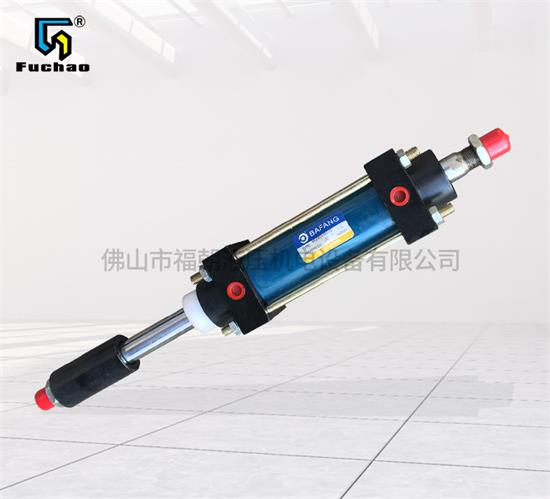Hydraulic cylinder The stroke refers to the action length of the piston rod, that is, the distance between the far point and to The distance of the near point. The stroke from the bottom of the hydraulic cylinder to the full extension is the stroke of the hydraulic cylinder. Hydraulic with buffer oil The stroke of the cylinder also includes the buffer length.
What is an adjustable stroke cylinder?
In the application field of hydraulic oil cylinder, due to the operation needs of the main engine, the stroke of the oil cylinder will need to be adjusted. At present, the tail of many hydraulic cylinders is integral, and these cylinders are not adjustable, which brings great inconvenience to the work. trip Adjustable oil cylinder The above problems can be solved. Stroke adjustable hydraulic pressure oil Cylinder can quickly and conveniently change the hydraulic pressure by means of adjustment without replacing parts oil Working stroke of cylinder.

The stroke of the hydraulic cylinder is adjustable, and the extension stroke of its piston can be freely adjusted within a certain range. If the stroke of the oil cylinder is 100mm and the adjustable stroke is 50mm, the available stroke of the oil cylinder is 50-100mm. Adjustable stroke hydraulic oil Structure characteristics of cylinder Stroke adjustable hydraulic pressure oil Cylinder, including cylinder body, piston rod, piston, front and rear end caps, guide sleeve, and necessary adjustable travel mechanism.
The existing hydraulic cylinder stroke adjustment mainly has the following three forms:
1. Screw adjusting type
Compared with the ordinary hydraulic cylinder, the stroke is adjustable oil The structural feature of the cylinder is that an adjustable travel mechanism is added at the rod end of the piston rod: an adjustable nut and a fixed nut.
By adjusting the position of the adjustable nut and the fixed nut, the extended length of the piston rod can be increased or decreased to adapt to different working conditions.
The advantages of this form are convenient, fast and economical.
2. Hydraulic valve regulating type
Install a hydraulic valve at the bottom of the hydraulic cylinder, connect the oil passage of the cylinder with the oil passage of the hydraulic valve, and control the action of the cylinder through the hydraulic valve to adjust the stroke of the cylinder.
The disadvantage of this type is that the hydraulic valve is set at the bottom of the oil cylinder, which increases the total length and size of the oil cylinder. In addition, when adjusting the stroke, it needs to dismantle all the oil cylinders, which is troublesome, time-consuming and labor-intensive.
3. Displacement sensor adjustment type
A displacement sensor is installed in the central hole of the piston rod, and the piston stroke is adjusted by setting the parameters of different displacement sensors.
Its advantages are easy to operate and accurate, while its disadvantages are that the cost of the displacement sensor is relatively high, and the stroke needs to be calibrated with a special instrument.
Screw adjustable stroke adjustment method:
1. Before work
Before operation, adjust the positions of adjustable nuts and fixed nuts to ensure that the stroke of the hydraulic cylinder meets the requirements of the host machine.
2. Shorten the stroke
When the relevant components of the hydraulic cylinder need to be updated, the working condition changes, or the stroke needs to be shortened for other reasons, the fixed nut can be loosened first, and the adjustable nut can be rotated clockwise to make the length required for forward movement. After adjustment, the fixed nut can be locked to get a shorter working stroke.
Such as hydraulic pressure oil The current stroke of cylinder is 100mm. If the stroke needs to be adjusted to 80mm, the adjustable nut needs to be moved forward 20mm.
3. Increase stroke
When hydraulic pressure oil After the cylinder works for a long time, if the stroke needs to be increased due to wear of components or other reasons, loosen the fixed nut first, and rotate the adjustable nut counterclockwise according to the stroke adjustment requirements to make the adjustable nut move backward for the required length. After adjustment, lock the fixing nut.
The stroke of the adjustable oil cylinder can be adjusted at any time without dismantling and replacing the oil cylinder or replacing parts. It is very convenient and cost saving. It is widely used in situations where the stroke of the oil cylinder needs to be changed.



